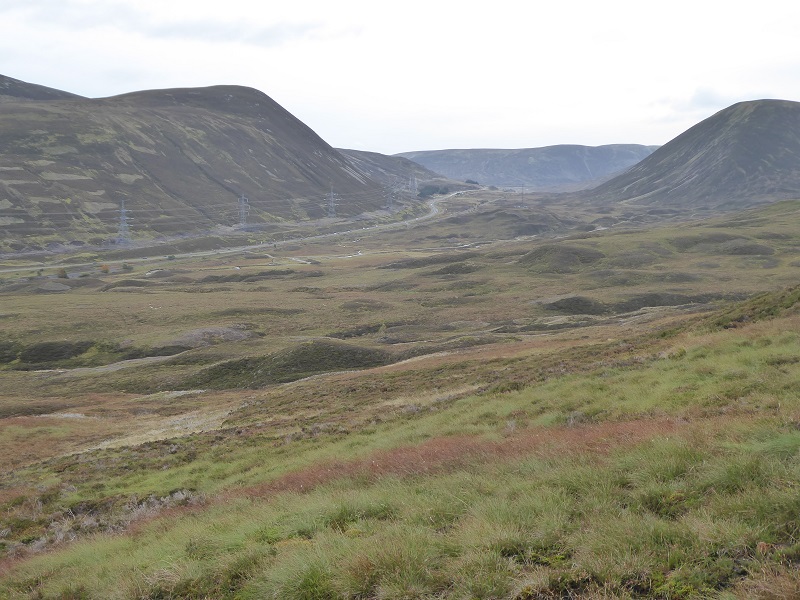
Over the last year Parkswatch has featured a number of posts about the destruction of the landscape at Drumochter, including:
- the unrestored Beauly Denny construction track between Dalnaspidal and Drumochter (see here);
- the failure of Scottish and Southern Electric to restore the ground at Drumochter as required by the Beauly Denny planning consent from the Scottish Government (see here for example);
- progress on the restoration of the Beauly Denny construction track from just south of Drumochter Lodge to the end of the A9 shelter belt opposite Dalwhinnie (see here)
- and, the continued proliferation of hill tracks and inappropriate use of All Terrain Vehicles around Drumochter (see here for example).
Two of these issues were considered by the Cairngorms National Park Planning Committee in December (see here for papers) and will be covered here. While welcoming the CNPA’s continued interest in Drumochter and the actions taken, this post will argue they do not go far enough and suggest some alternative measures to restore and enhance the landscape and its wildlife.
The North Drumochter Estate Beauly Denny track restoration
 In February 2015 the CNPA gave consent to the North Drumochter Estate to retain a section of the Beauly Denny construction track outwith the Drumochter Hills Special Area of Conservation and Special Protection Area (above in red) on the condition that the track was narrowed and a belt of native trees was planted alongside it. The restoration, with the exception of the shelter belt was due to be completed by June 2016.
In February 2015 the CNPA gave consent to the North Drumochter Estate to retain a section of the Beauly Denny construction track outwith the Drumochter Hills Special Area of Conservation and Special Protection Area (above in red) on the condition that the track was narrowed and a belt of native trees was planted alongside it. The restoration, with the exception of the shelter belt was due to be completed by June 2016.
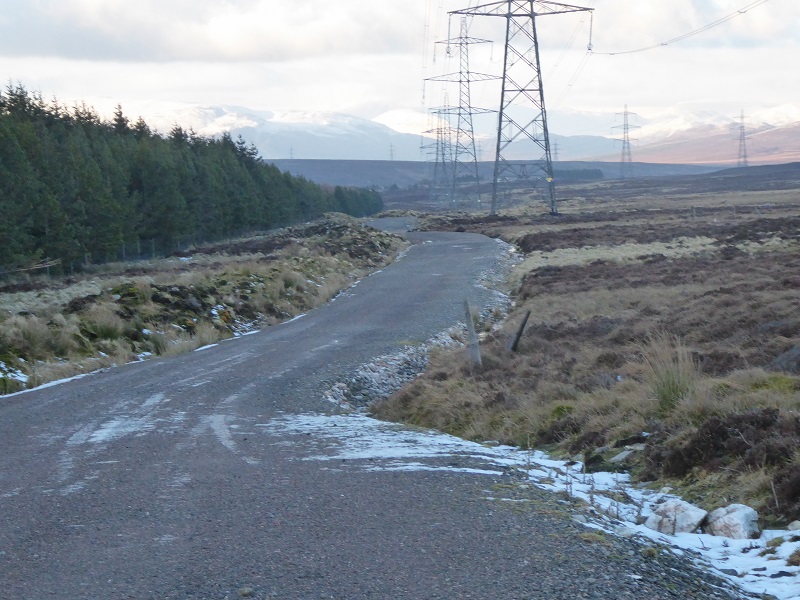
A year ago the restoration had not started but sometime between then and August 2017, when I next visited, the northern section of the track (above my arrow) was restored. The work was done by McGowan, who provided the specification for the track which was submitted to the Planning Committee, and has generally been completed to a high standard, much higher than is usual for hill tracks or for most of the Beauly Denny restoration work to date:
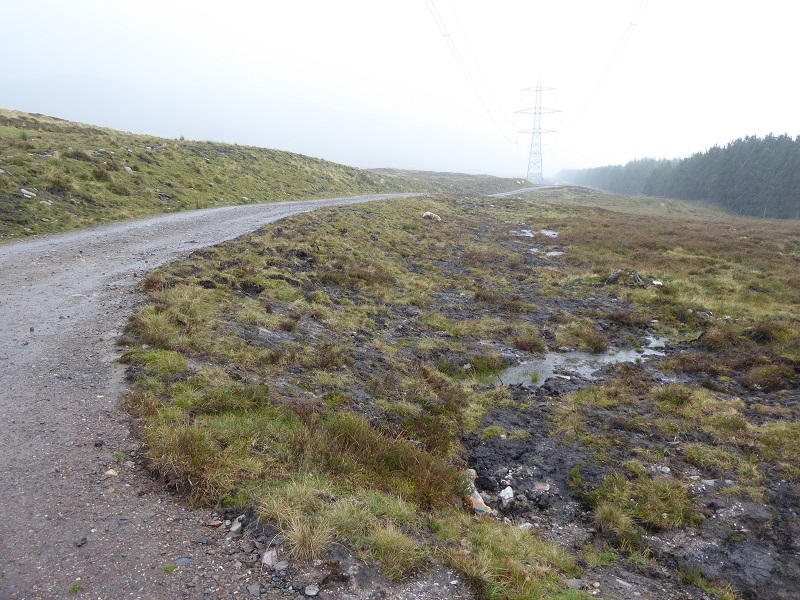
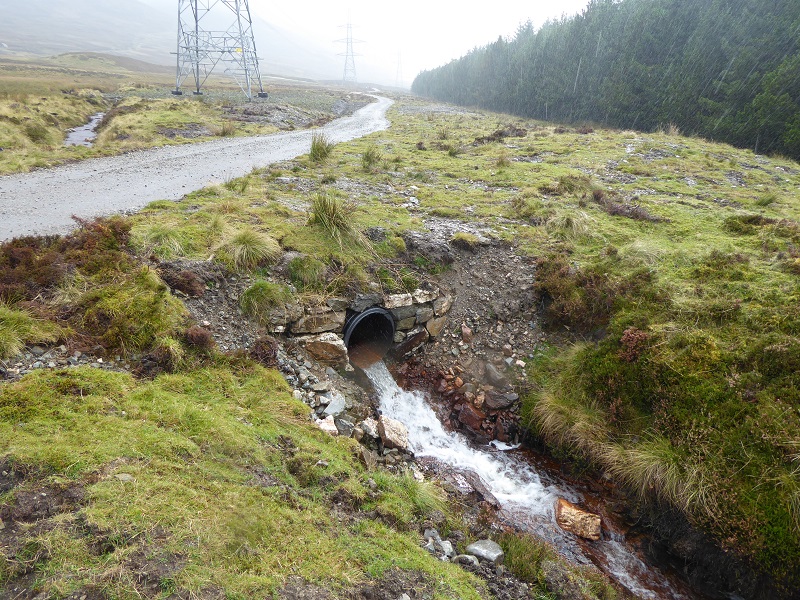
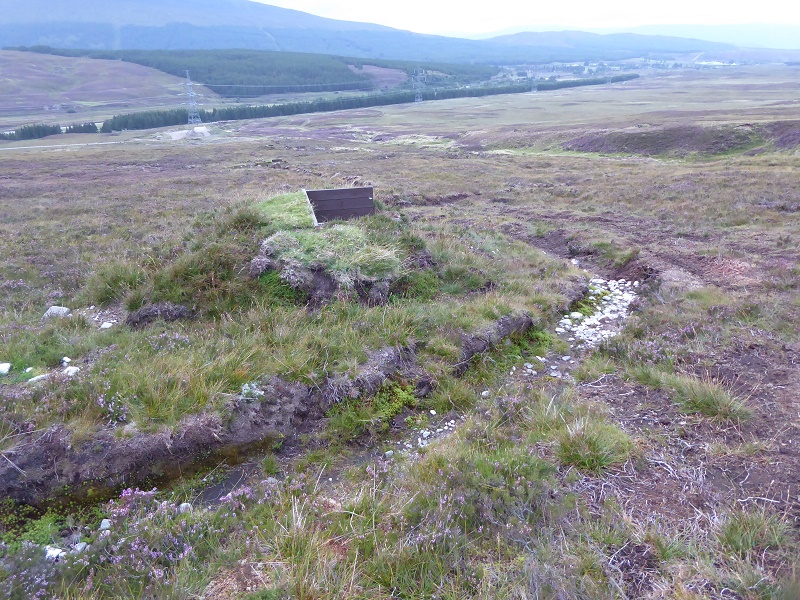
While generally McGowan has done a very good job, their ability to restore the track to the standards set out in the specification appears to have been affected by a number of factors. Throughout its length the section of restored track is broader then specified by the planning conditions:
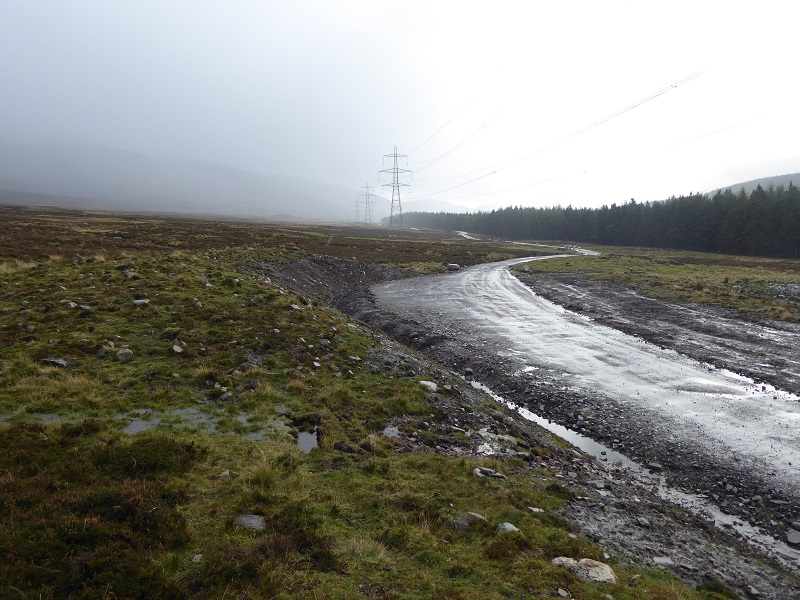
The reason for this appears to be that insufficient turves were stored for restoration purposes so that there wasn’t enough material available to restore the track to the required width. I don’t think matters too much here because the track is hidden from a distance and because of the proposals to plant native trees to help conceal it. However, it provides yet more evidence of why planning authorities need to monitor very closely any requirements that developers store turves properly when restoration of construction tracks in required. This in my view has been the key failure of the Beauly Denny construction.

My main grouse – an appropriate word here as that is the main wildlife you are likely to see? – is that most of the culverts have not been properly finished. This I hope is something which will be pursued by the CNPA.
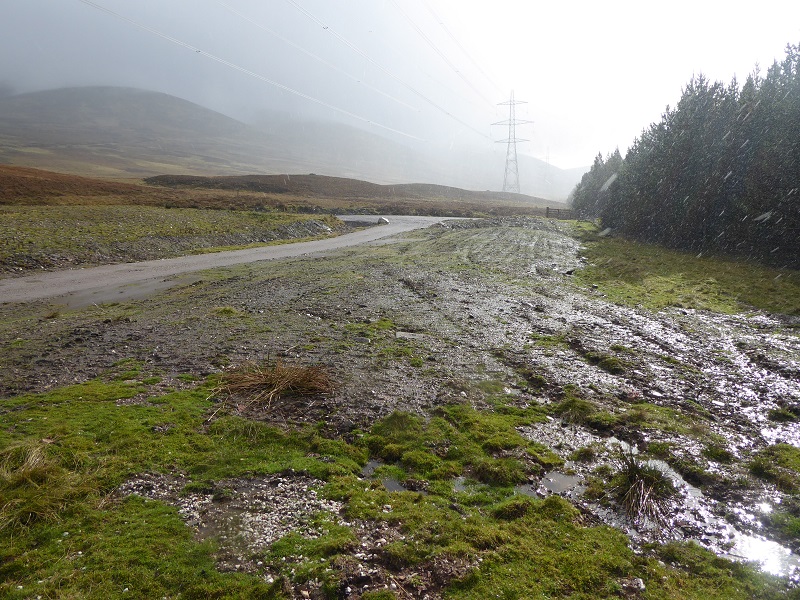
Another more minor grouse is that vehicles continue to be driven over areas which have been “restored” adversely affecting vegetation recovery.
Its within the context of this work that the North Drumochter estate made a further planning application to remove the requirement from the planning consent to plant native trees alongside the track. I am pleased to say that CNPA officers recommended that this be rejected (see here) and the Planning Committee endorsed that recommendation. Both the North East Mountain Trust and Badenoch and Strathspey Conservation Group had objected to the removal of this condition and I suspect that helped the CNPA to stand its ground.
On the north section of the track, the main short-term landscape impact of the continued requirement to plant a 5m strip of native trees between it and the existing shelterbelt will be to soften the edge of the line of trees. If the shelterbelt was ever to be felled, however, it would then be the only thing screening the track. It is therefore a good decision in landscape terms. Its good too for ecological reasons. While there is generally too much emphasis on planting native trees, rather than reducing deer and sheep numbers and seeing what grows (trees will grow in some places not others), here the trees will provide an alternative to the intensive grouse moor management which dominates the landscape. They should provide a home to other forms of wildlife and maybe even a partial refuge to some of the creatures which are persecuted on the grouse moors.
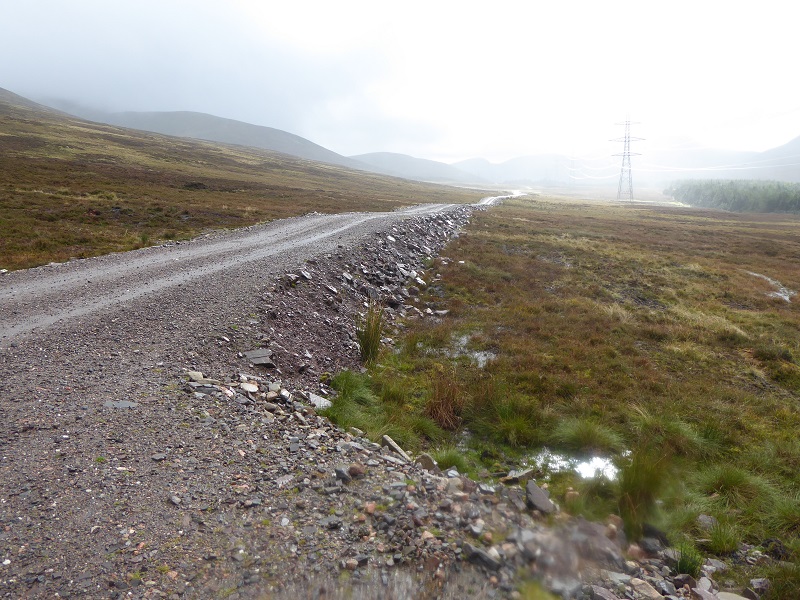
Further south, along the section of track which remains to be restored, the native trees will fulfil a far more important landscaping function as the track runs higher across the hill away from the existing A9 shelterbelt and is highly visible. The restoration of this middle section of the track poses considerable technical challenges as it has basically been floated across the moor. In my view the best solution would be to remove all the excess aggregate from site – rather than trying to bury it under vegetation – and use it for the construction of the new A9. Perhaps the CNPA could persuade Transport Scotland and the north Drumochter Estate to work together on this?
The restoration of the Beauly Denny by SSE
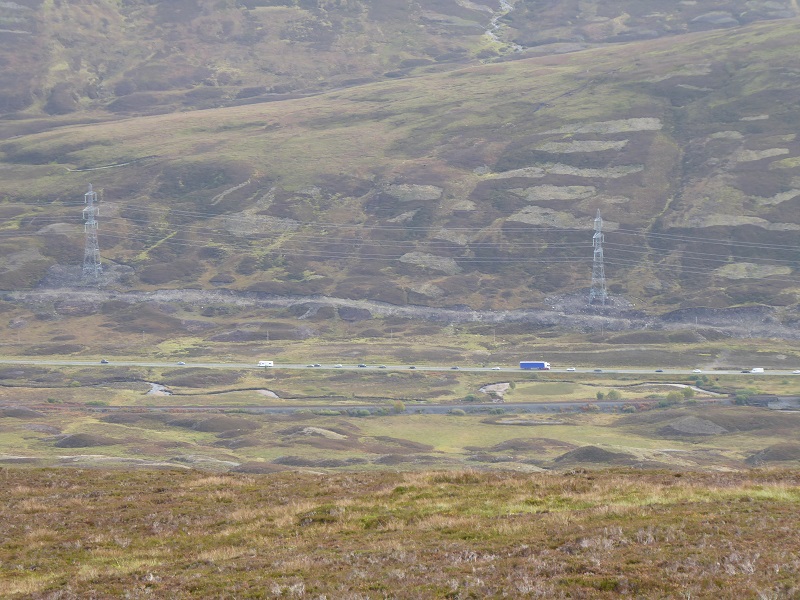
The second “Drumochter” item considered by the December meeting of the Planning Committee was an update report on SSE’s restoration of the Beauly Denny Item10AABeaulyDennyUpdate.
 This represents a breakthrough as SSE had previously been claiming the restoration of the Beauly Denny was nothing to be concerned about and that the destruction caused to the landscape could be repaired through natural regeneration alone. CNPA staff are to be congratulated in getting SSE, who are a very powerful organisation, to accept this officially after doing nothing for two years.
This represents a breakthrough as SSE had previously been claiming the restoration of the Beauly Denny was nothing to be concerned about and that the destruction caused to the landscape could be repaired through natural regeneration alone. CNPA staff are to be congratulated in getting SSE, who are a very powerful organisation, to accept this officially after doing nothing for two years.
SSE provided a summary report of this year’s survey results (see here) for the Planning Committee. This contains no analysis of what caused the problems while the solutions its proposing to pilot in 2018 – some re-seeding and fencing off of ground – are minimalistic. The entire focus of the report is on vegetation. There is no mention of the landscape issues and more specifically of the failure of SSE to ensure that where the track was removed, the land was restored to its existing form as required by the original planning consent. This has left large “benches” cut across the hillside (photo above) which are still being used as estate tracks (below) and have a considerable landscape impact:
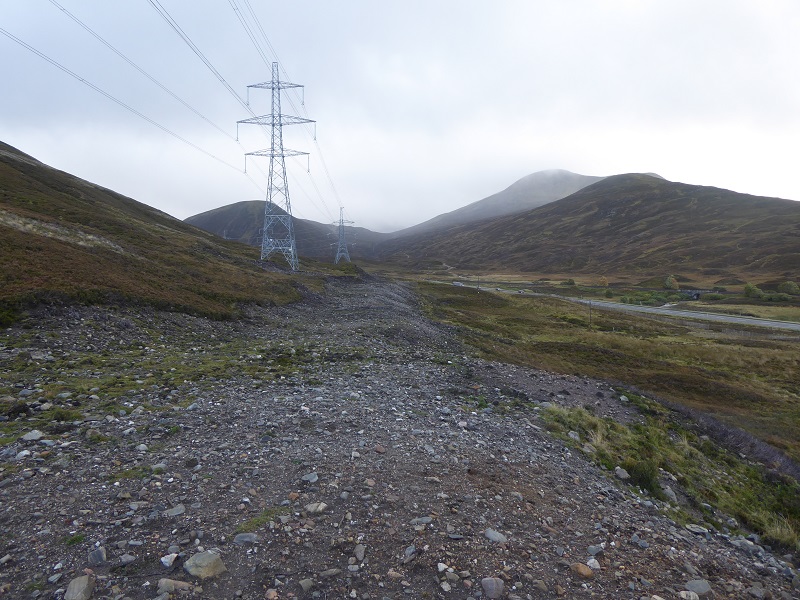
By contrast, although I was disappointed the CNPA report did not cover SSE’s failure to restore landforms as required, the report does explain why re-vegetation has been so poor:
There appear to be two main reasons for this. Firstly, in some areas, the soil management and handling during construction as well as restoration was poorly executed, leaving little soil material or very wet ground and secondly, there has been no clear management for grazing sheep and deer. It is clear that even where some regrowth has occurred it is heavily cropped by mammals.
Its good to see CNPA recognise that for effective restoration to take place vegetation and turf has to be set aside and stored properly from the beginning. Evidence that SSE failed to do this can be seen everywhere:
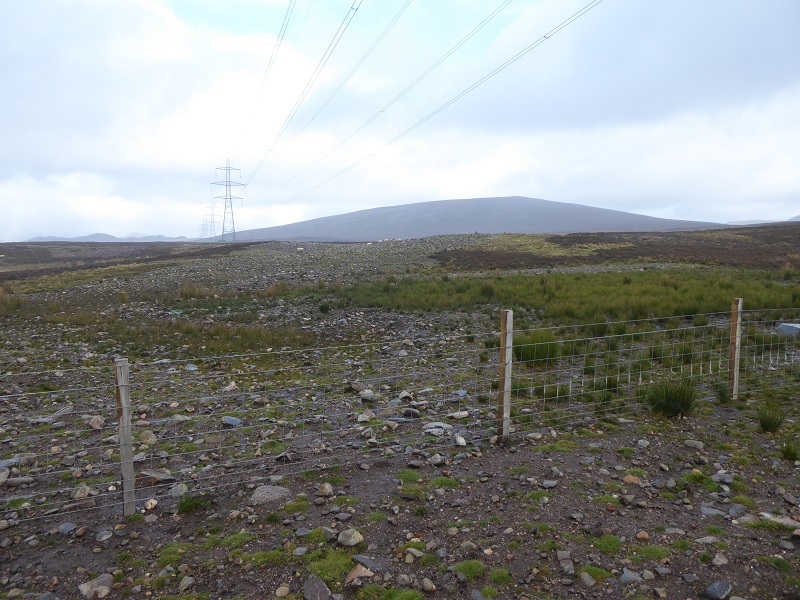
The CNPA and SSE reports differ too on their assessment of the seriousness of the situation. The SSE survey claims that:
“Of the sites monitored throughout the CNPA area, 41% are assessed as being in Good or Excellent condition for revegetation and a further 20% are showing demonstrable improvement.”
and then classifies the remaining 39% as being of concern. The CNPA by contrast are sceptical about the improvements claimed and conclude
“59% are mediocre or sparse and more than half of these were also sparse last year, with no significant improvement so are likely to required additional mitigation measures to ensure full revegetation within the five year period”
Having walked the entire Drumochter section of the Beauly Denny I have to say I have strong doubts that the sites SSE chose to survey are representative – it would be in the public interest the full survey is released – and that the CNPA’s assessment of the situation is far nearer the mark. My view is that at least 2/3 of the “restoration” is not fit for purpose.
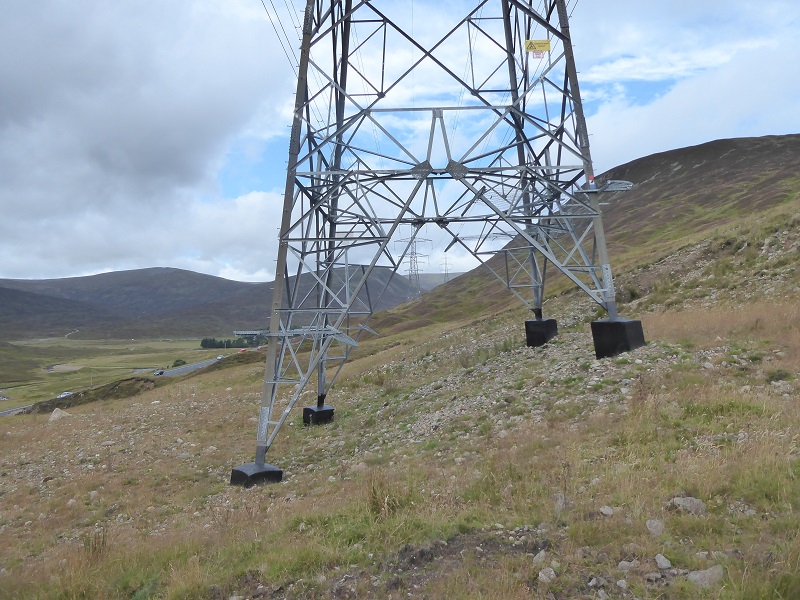
While I don’t doubt that grazing is having an impact on the ability of vegetation to re-colonise bare ground, this is not the fundamental issue. Because of the way the ground has been disturbed, SSE has created more mineral soils which will promote vegetation that is good for animals to eat. Couple that with the large number of deer in the southern part of the National Park and you have a problem. The proposed solution to fence off areas, avoids the issue. It would be far better for SSE to be asked to finance deer culls and compensate the estate for removing sheep from the area and aid vegetation recovery that way.
Even better would be for the CNPA to advocate the solutions which have been developed in Glen Bruar, where a failure to store vegetation properly during the hydro pipeline construction (see here) created a landscape scar several kilometres long just like through the Drumochter. Those scars have now almost disappeared due to the application of different techniques, which involve careful robbing of vegetation, and in a very short timescale (see here) with McGowan again the contractor. So why not at Drumochter?
What needs to be done to make the Beauly Denny restoration happen
While I very much hope that CNPA staff keep up the pressure on SSE, I would like to see them encouraged by their Board and Planning Committee to go several steps further than they have at present and:
- Consider the Beauly Denny restoration from a landforms perspective and more specifically how to heal the scars that have been left by the poor removal of the construction tracks. A first step on this would be for SSE to commission an independent report on what needs to be done to restore the landscape to its original state (as required by the Scottish Government planning consent). A plan could then be developed to implement this prior to any further vegetation restoration work.
- Press for SSE to adopt a similar approach to landscape and vegetation restoration at Drumochter as was taken at Glen Bruar.
- Reject the proposal to deal with grazing impacts through fencing and instead focus on how to reduce the number of grazing animals at Drumochter (which would also support the Board decision to require the retained section of track on the north Drumochter estate to be screened by trees)
- Create a Drumochter landscape steering group which would bring together SNH, Highland Council, SSE and Transport Scotland (due to the A9 dualling) in order to ensure a holistic approach is taken to protecting the landscape, with a view to amelioriating/remedying past damage and mistakes and ensuring that these are not repeated when the A9 is dualled.
Most of this should be financed by SSE and would cost them far more money than their current meagre proposals. As a consequence I expect SSE to be resistant to it despite their self-proclaimed mission to set an example as a responsible business The most likely way to achieve change, will be if the wider public starts calling on the Scottish Government and SSE to fulfil their responsibilities and not leave everything up to the CNPA who, in the wider scheme of how this country is run, are not a particularly powerful public body.